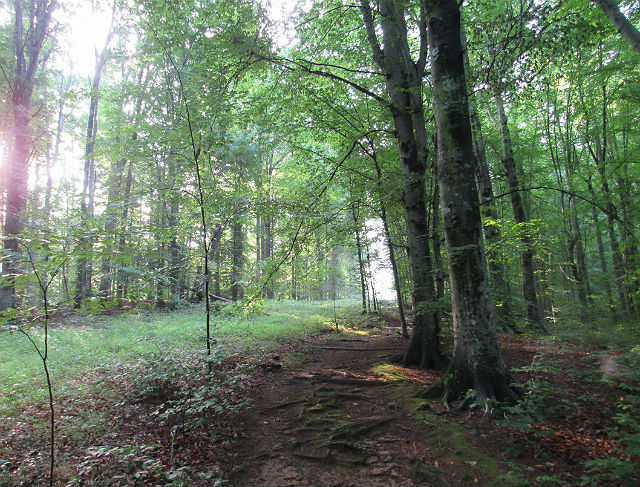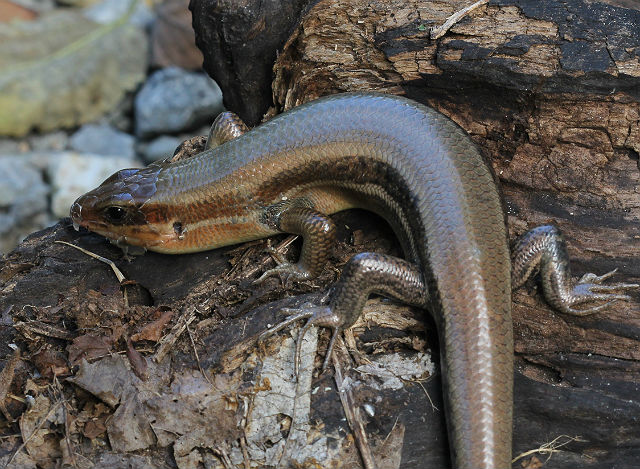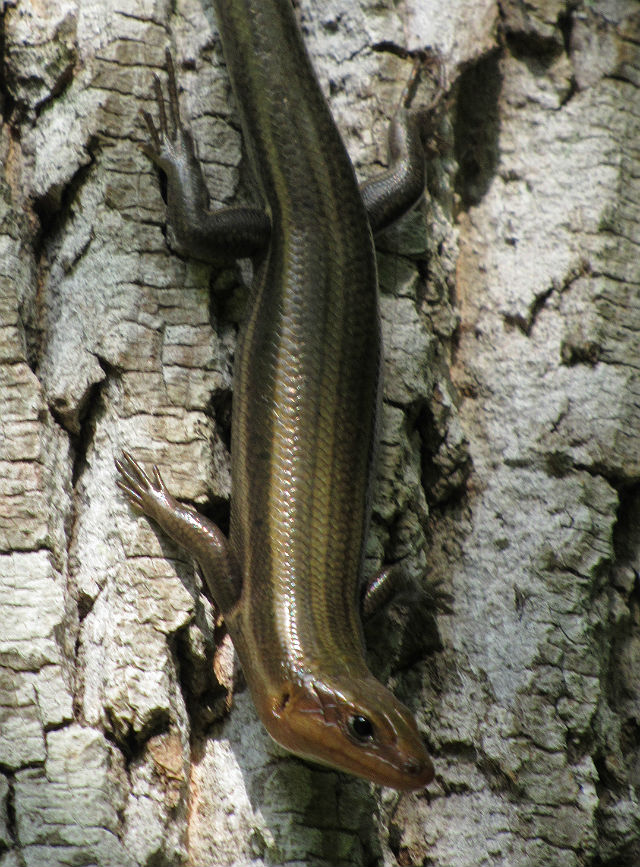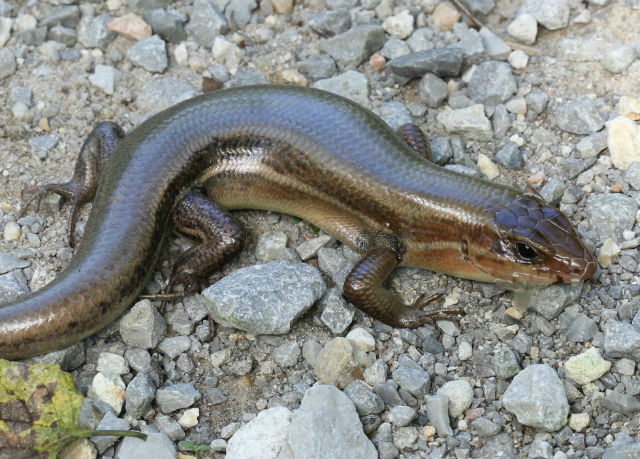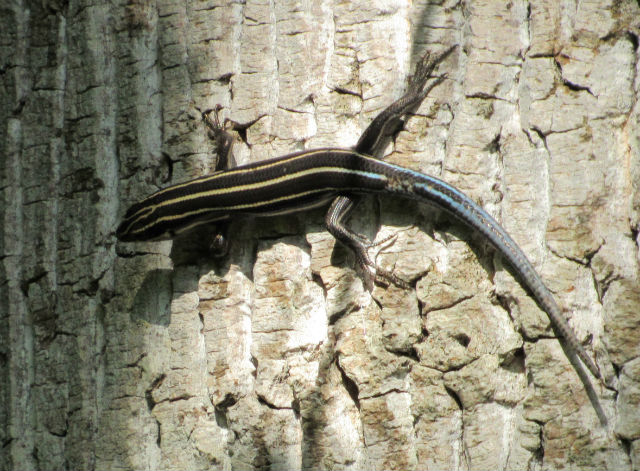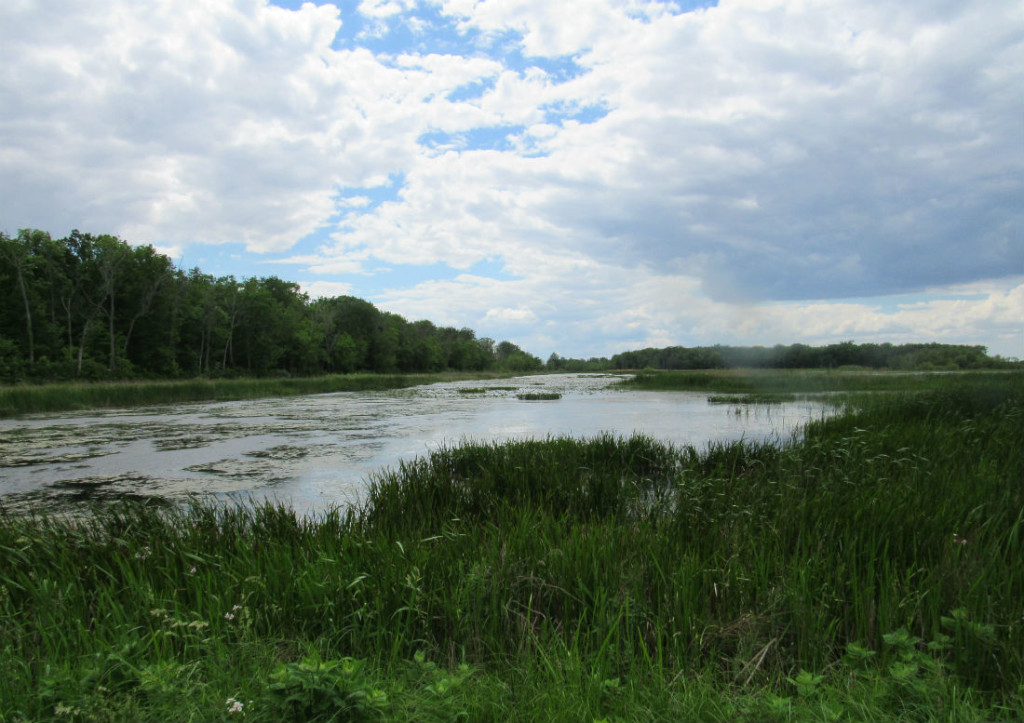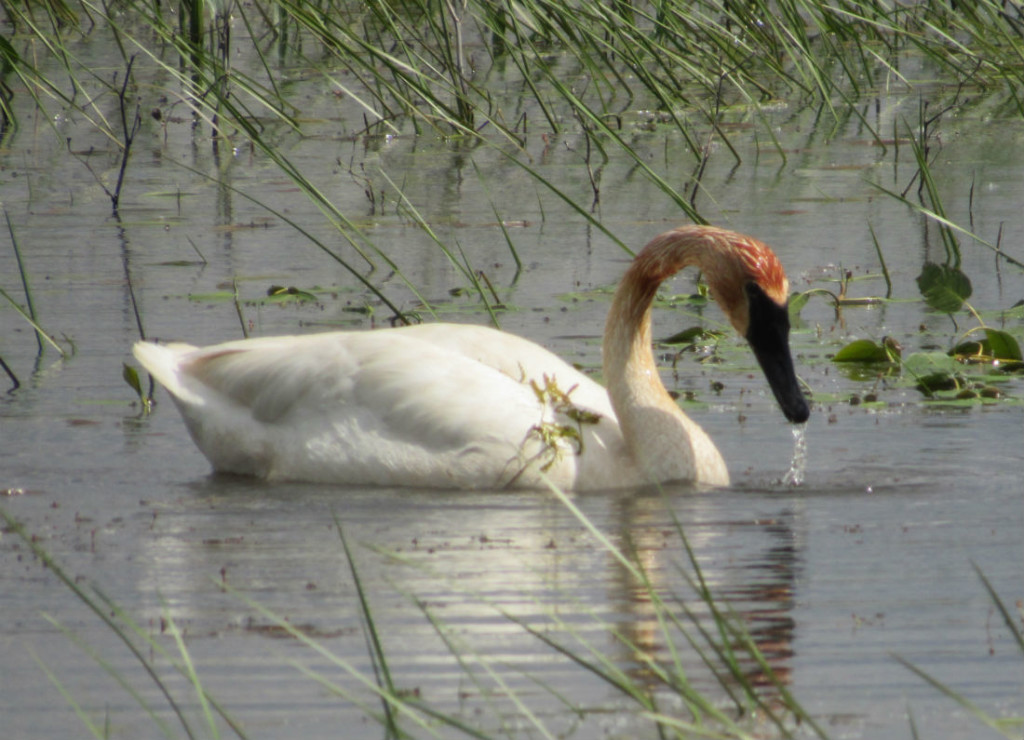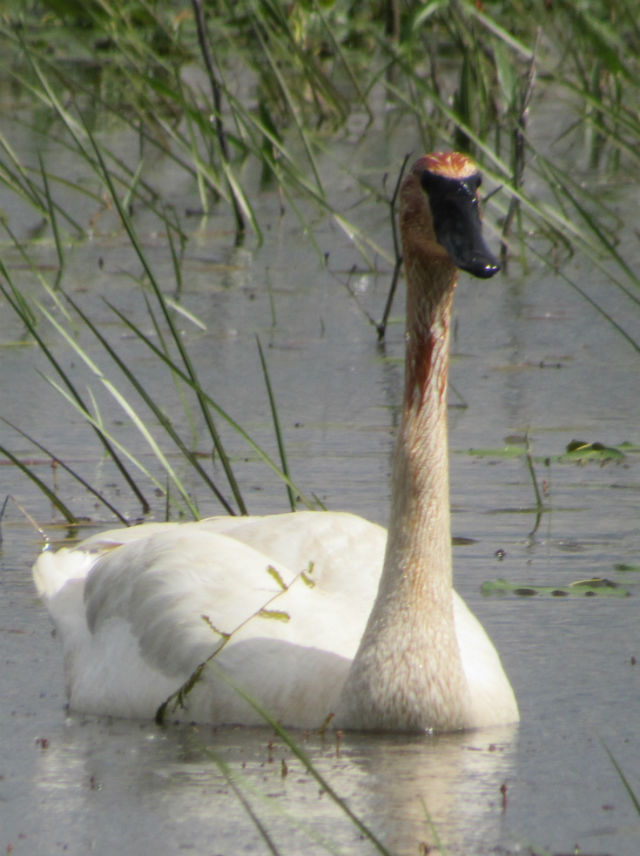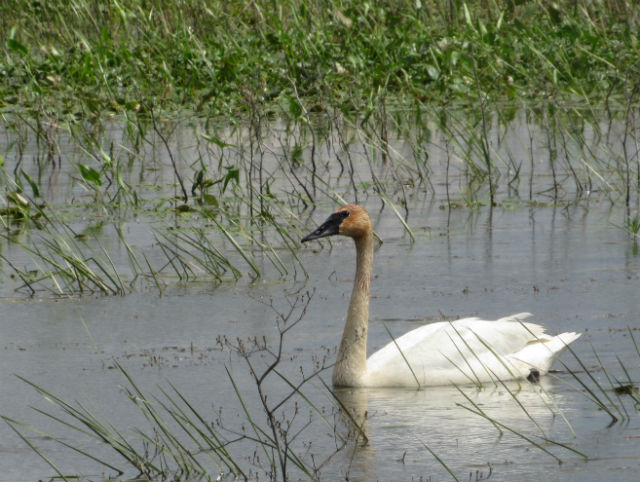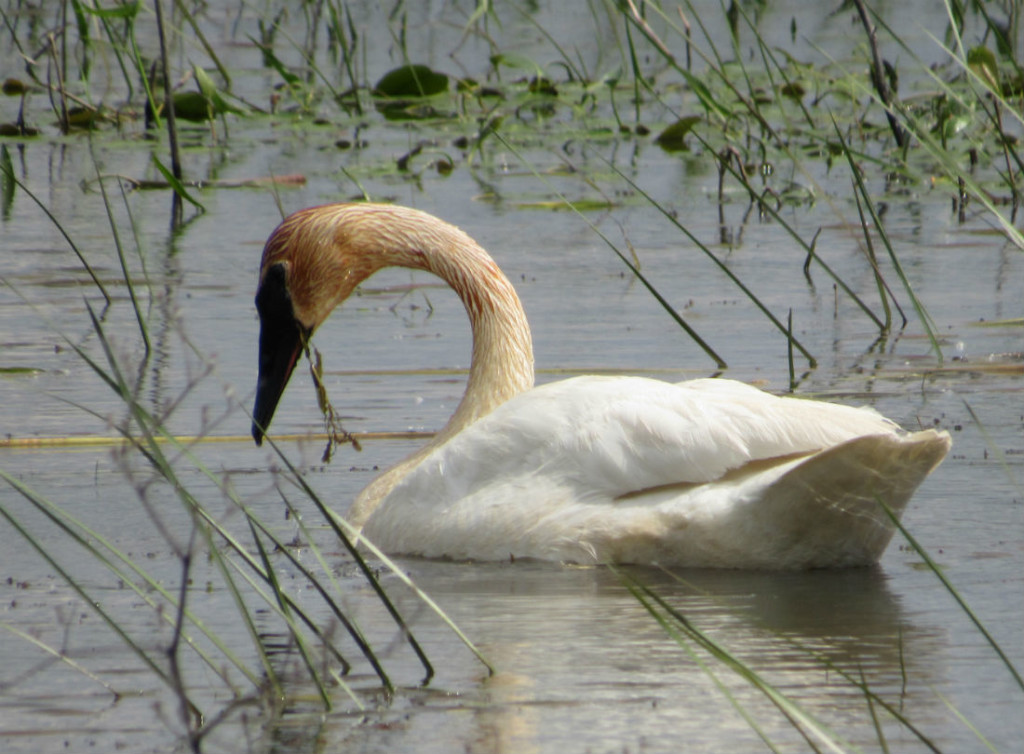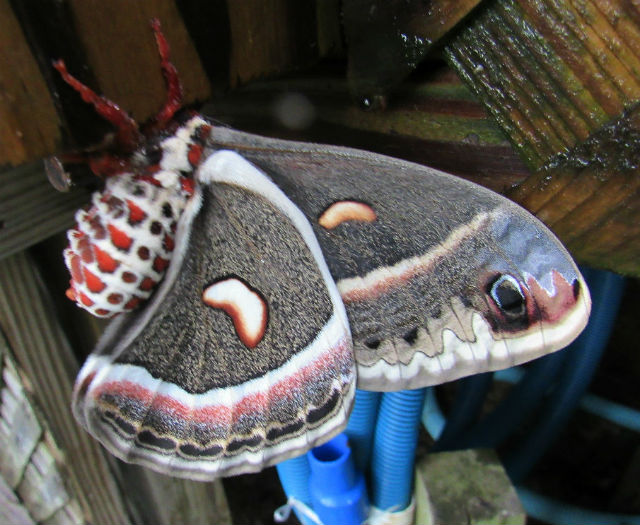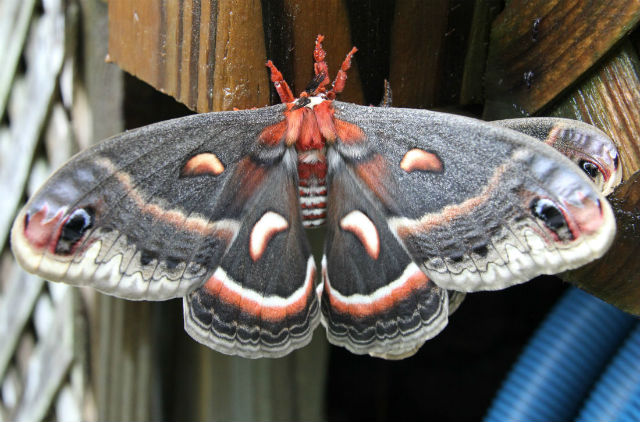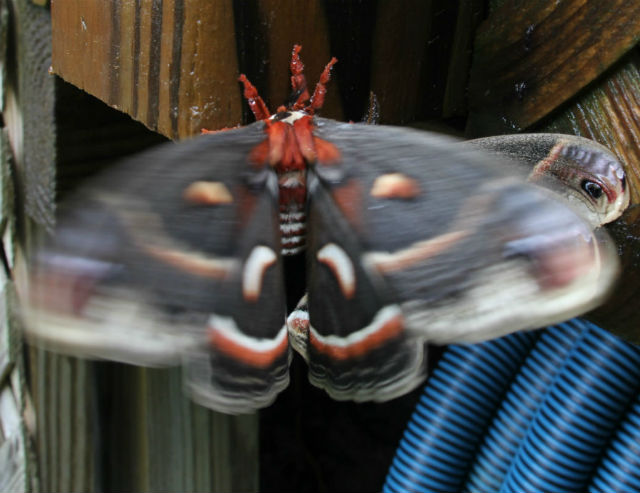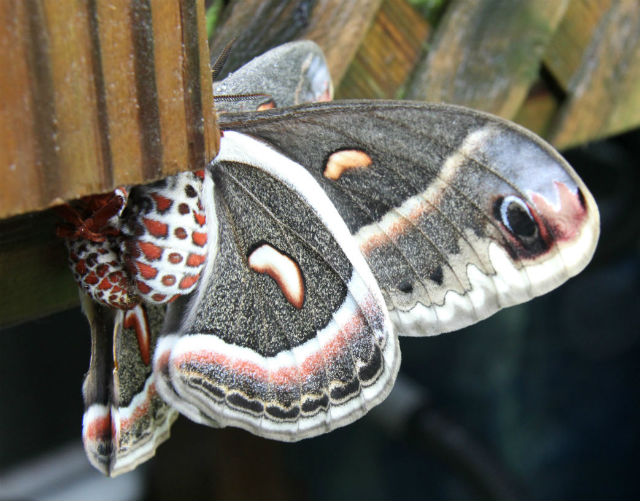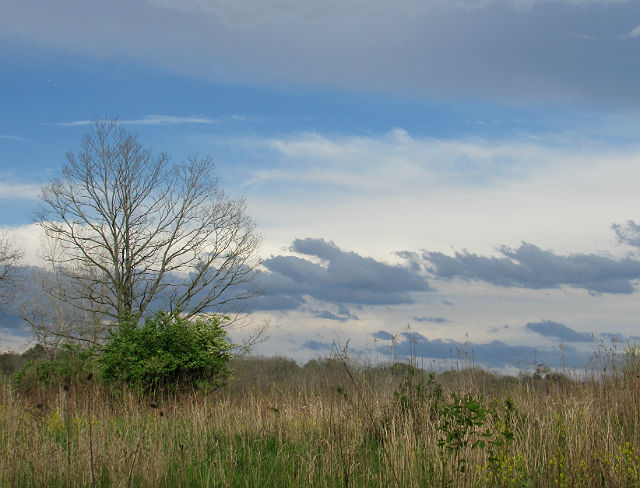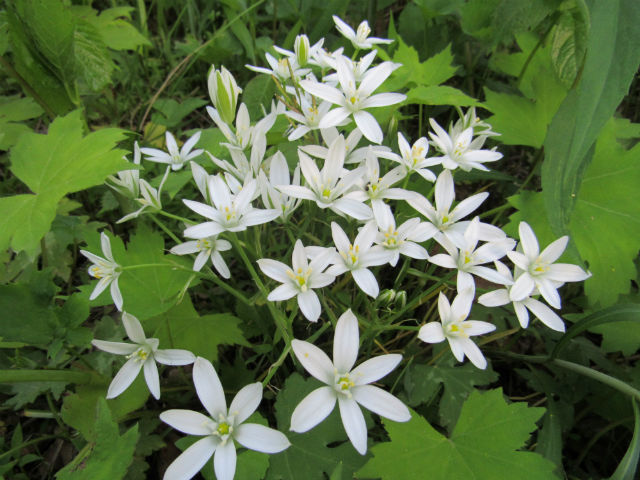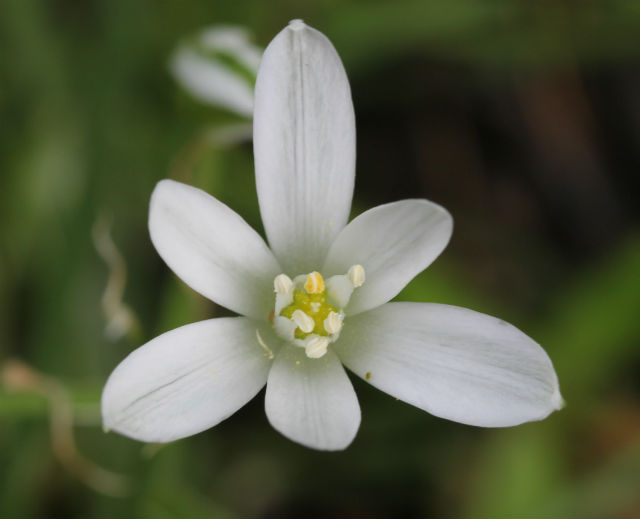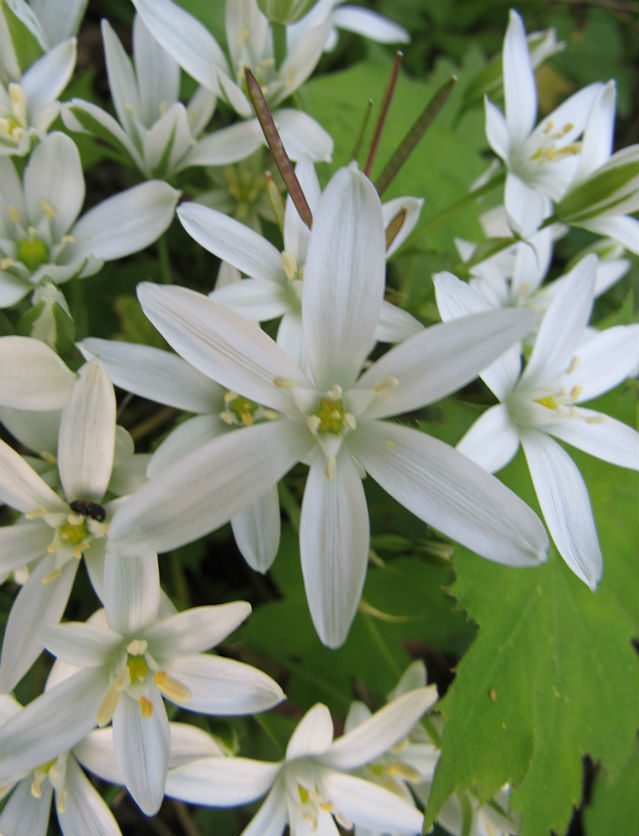While visiting Virginia this month, I came across a lizard that I have not seen in a few years. The Broadhead Skink can grow to over a foot long and is the northeast’s largest lizard.
This reptile is essentially a woodland inhabitant. It easily climbs trees and can sometimes be observed high in the branches of dead trees.
Though Broadhead Skinks live in trees and prefer open forest habitats, they can also found hunting, mating and nesting on the ground. Here is one that I saw crossing a gravel road in southern Illinois a few years back.
The female and young closely resemble the female and young of the smaller Five-lined Skink. This is an immature specimen which has a bright blue tail. Adult males are a uniform olive-brown, often sporting a considerable amount of red-orange coloration on their enlarged heads.
Their diet is comprised of mostly insects. Broadhead Skinks search for food in trees and on the the ground using visual and scent signals, which are detected by tongue flicking.

